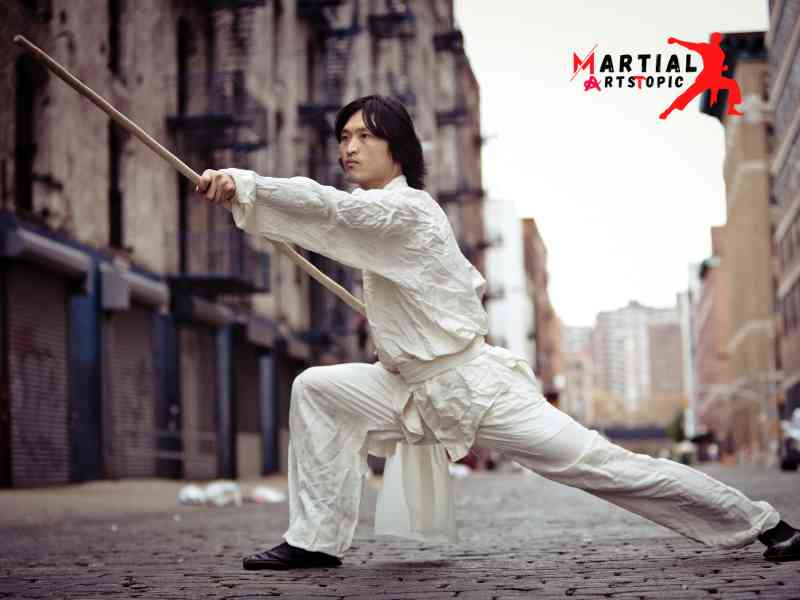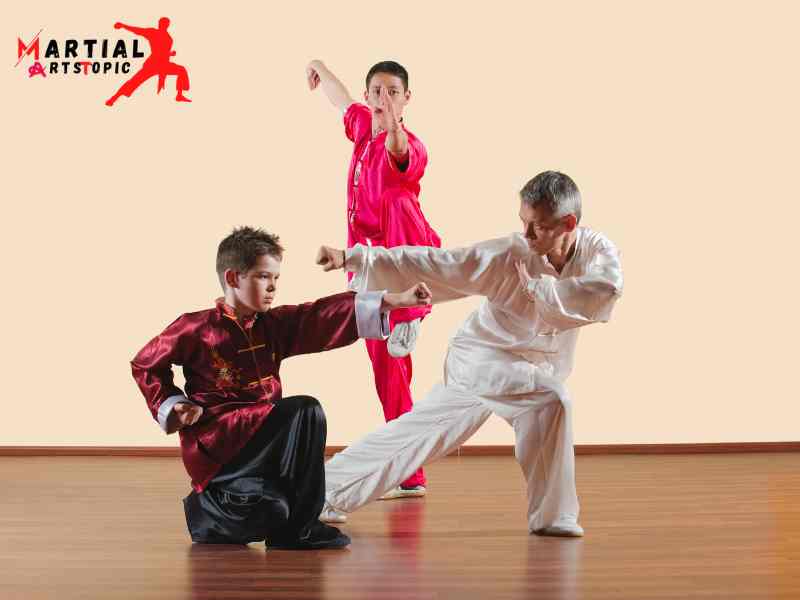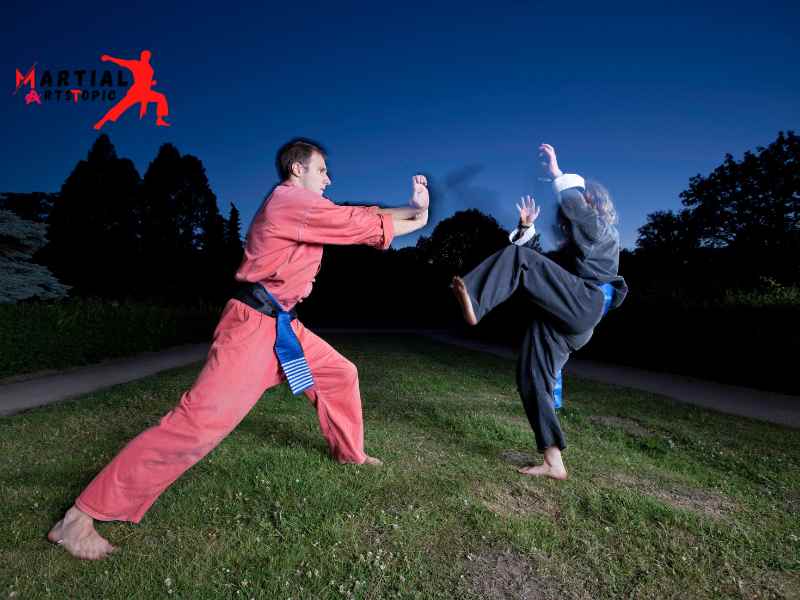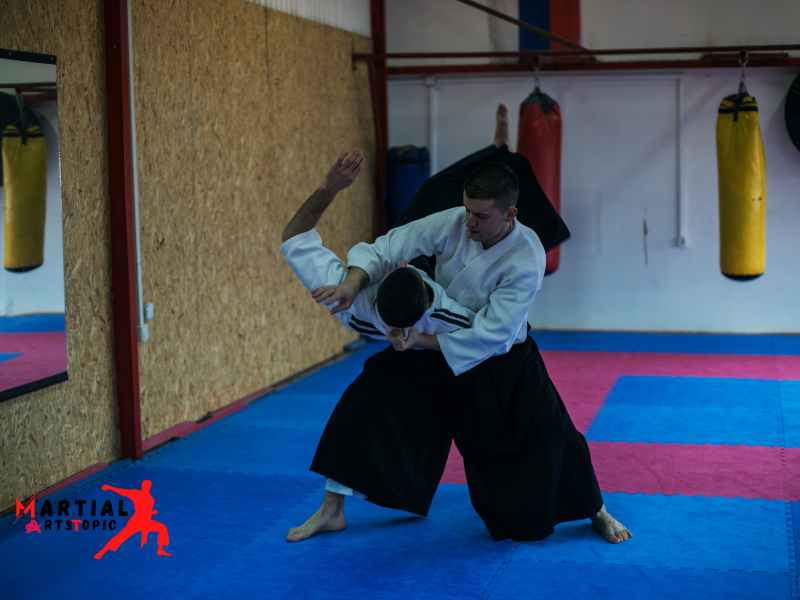
Unveiling the Art of Kung Fu Martial Arts
Unveiling the Art of Kung Fu Martial Arts is a fascinating journey into the rich history, philosophy, and techniques of this ancient martial art. From its origins in the Shaolin Temple to its modern-day adaptations, Kung Fu embodies a blend of physical prowess, mental discipline, and spiritual development. With its diverse styles, including Wing Chun, Tai Chi, and Wushu, Kung Fu offers a holistic approach to self-defense and personal growth. Whether you’re a seasoned practitioner or a curious newcomer, exploring the art of Kung Fu can be both enlightening and empowering. Join us as we delve into the essence of this timeless martial art and uncover the wisdom it holds for individuals seeking balance, strength, and inner harmony.
The Role of Kung Fu in Chinese Culture
The Role of Kung Fu in Chinese Culture: A Rich Origins, History and Tradition The Role of Kung Fu in Chinese Culture: A Rich Origins, History, and Tradition Kung Fu, also known as Chinese martial arts, is deeply rooted in Chinese culture and has a rich history that spans thousands of years. This ancient art form holds a significant place in Chinese society, not only as a means of self-defense but also as a pathway to self-discipline, self-improvement, and spiritual growth. In this blog post, we will delve into the origins, history, and tradition of Kung Fu, exploring its profound impact on Chinese culture.
Origins of Kung Fu
We can trace the origins of Kung Fu back to ancient China, where it emerged as combat and survival technique. Initially developed for protection against wild animals and enemies, Kung Fu gradually evolved into a comprehensive system of self-defense techniques. The movements and instincts of animals inspired the early practitioners of Kung Fu, incorporating their grace, strength, and agility into their fighting styles.
History of Kung Fu
Kung Fu Martial Arts: Throughout history, Kung Fu has played a vital role in shaping Chinese society. Various dynasties, philosophical teachings, and cultural practices have influenced it, resulting in an extensive array of different styles and forms. We often credit the Shaolin Temple as the birthplace of Kung Fu, as it served as a sanctuary for martial artists and a center for training and knowledge exchange.
During the Ming and Qing dynasties, Kung Fu gained popularity among the common people, who sought to defend themselves against bandits and oppressive rulers. It became an essential part of Chinese folklore, with legendary heroes and mythical tales immortalizing the art of Kung Fu. Over time, Kung Fu became more than just a martial art; it became a symbol of courage, honor, and national pride.
Tradition and Philosophy of Kung Fu

Kung Fu is not solely about physical combat; it encompasses a broader philosophy and way of life. Central to the practice of Kung Fu is the cultivation of inner strength, discipline, and harmony between mind, body, and spirit. It emphasizes the principles of respect, humility, perseverance, and self-control.
The practice of Kung Fu involves rigorous training, which includes various forms, stances, strikes, kicks, and defensive techniques. It requires practitioners to develop strength, flexibility, balance, and endurance. Beyond the physical aspect, Kung Fu also incorporates meditation and breathing exercises to enhance focus, concentration, and mental clarity.
Impact on Chinese Culture
The influence of Kung Fu on Chinese culture is far-reaching. It has permeated various aspects of Chinese society, including literature, art, theater, and film. Countless books, poems, and dramas have been dedicated to the art of Kung Fu, immortalizing its legends and heroes. Kung Fu films, such as Bruce Lee’s iconic movies, have captivated audiences worldwide, showcasing the beauty and skill of Chinese martial arts.
Kung Fu has had a profound impact on Chinese philosophy and spirituality. It is closely associated with Taoism and Buddhism, incorporating their principles of balance, harmony, and self-discovery. We often view the practice of Kung Fu as a means of personal transformation, leading to self-realization and enlightenment.
Kung Fu Weapons: Unleashing the Power of Traditional Martial Arts
Kung Fu Martial Arts Weapons: Unleashing the Power of Traditional Martial Arts In the vast world of martial arts, Kung Fu stands out as one of the most ancient and revered practices. With a history dating back thousands of years, Kung Fu has evolved into a comprehensive system of self-defense, physical conditioning, and spiritual growth. One aspect that sets Kung Fu apart from other martial arts is its extensive use of weapons.
Kung Fu weapons are not just tools of combat; they embody the rich cultural heritage and philosophy of this traditional martial art. Each weapon has its unique characteristics and requires dedicated training to master. Let’s explore some of the most iconic Kung Fu weapons and discover the power they possess.
Straight Sword (Jian)
The Jian is a double-edged straight sword that symbolizes the elegance and grace of Kung Fu. It requires precision and finesse to wield this weapon effectively. The Jian enhances the practitioner’s agility, speed, and coordination while instilling discipline and focus. Its fluid movements make it a favorite among Kung Fu enthusiasts.
Staff (Gun)
The Staff, also known as Gun, is a long wooden weapon that emphasizes strength and versatility. Traditionally made from oak or wax, wood, the Staff provides an excellent full-body workout while improving balance and coordination. It allows practitioners to defend against multiple opponents and provides a foundation for more advanced weapon techniques.
Spear (Qiang)
The Spear, or Qiang, is one of the oldest and most widely used weapons in Kung Fu. Combining long-range attacks and close-quarter combat techniques, the Spear requires a deep understanding of timing and distance. It strengthens the practitioner’s core muscles, enhances focus, and teaches the importance of timing and precision.
Twin Hooks (Shuang Gou)
The Twin Hooks, also known as Shuang Gou, are unique weapons resembling a pair of curved blades with hooks on the end. These weapons demand exceptional coordination and dexterity, as we can use them for both offensive and defensive maneuvers. They revered the Twin Hooks for their ability to disarm opponents and control the battlefield effectively.
Butterfly Swords (Butterfly Knives)
The Butterfly Swords, or Butterfly Knives, are short, double-edged blades with a distinctive handle design resembling a butterfly’s wings. These weapons require exceptional skills, as their primary focus is on close-quarter combat and quick, agile movements. The Butterfly Swords promote agility, speed, and adaptability in combat situations.
Chain Whip (Jiujiebian)
The Chain Whip, or Jiujiebian, is a flexible weapon comprising metal chain links with a solid handle at one end. It demands precision and control, as it can strike, entangle, or disarm opponents. The Chain Whip teaches practitioners to adapt to unpredictable situations and enhances their reflexes and hand-eye coordination.
Kama (Karate Sickle)
The Kama, or Karate Sickle, is a traditional farming tool transformed into a lethal weapon. With a curved blade attached to a handle, the Kama enhances the practitioner’s cutting and slashing techniques. It requires strength, agility, and accuracy to master, making it a formidable weapon in close-quarter combat.
Kung Fu weapons are not only fascinating to watch but also carry profound cultural significance. They reflect the discipline, philosophy, and ancient wisdom of traditional martial arts. By training with these weapons, practitioners develop physical strength, mental focus, and a deep connection to the martial art’s historical roots.
Whether you are a beginner or an experienced martial artist, the world of Kung Fu weapons offers endless possibilities for growth and exploration. Embrace the power of these traditional tools and unlock your true potential as a martial artist.
Discover the artistry, discipline, and power of Kung Fu weapons. Experience the rich heritage of this ancient martial art and witness the mesmerizing movements that embody the essence of Kung Fu. Unleash your inner warrior and embark on a journey of self-discovery with Kung Fu and its awe-inspiring weapons.
Traditional and modern styles of kung fu

Traditional and Modern Styles of Kung Fu: Exploring the World of Martial Arts Kung Fu, also known as Chinese martial arts, is a captivating practice that has been passed down through generations. With its rich history and diverse range of styles, kung fu has developed into a fascinating blend of traditional and modern techniques. In this blog post, we will delve into the exciting world of kung fu, exploring its origins, traditional styles, and the evolution of modern approaches to this ancient martial art.
Origins of Kung Fu: A Glimpse into Chinese History
Kung Fu traces its roots back to ancient China, where it was developed as a means of self-defense and survival. It originated in the Shaolin Temple during the 6th century and was influenced by the philosophy of Taoism and Buddhism. As it spread across China, it developed many styles, each with its unique characteristics and techniques.
Traditional Styles of Kung Fu: Embracing History and Culture
Something deeply rooted traditional kung fu styles in Chinese history and culture. These styles emphasize discipline, precision, and the cultivation of inner strength. Some popular traditional styles of kung fu include Wing Chun, Shaolin, Tai Chi, and Wushu.
- Wing Chun: Known for its close-range combat techniques and efficient movements, Wing Chun focuses on quick strikes and simultaneous defense. It emphasizes speed, agility, and the use of leverage, making it an effective self-defense style.
- Shaolin: Originating from the famous Shaolin Temple, its strong stances, complex kicks, and acrobatic movements characterize this style. Shaolin kung fu incorporates both external and internal training, emphasizing the development of physical strength and mental clarity.
- Tai Chi: Often referred to as a “moving meditation,” they knew Tai Chi for its slow, flowing movements and emphasis on relaxation and balance. It promotes the harmonization of mind, body, and spirit, making it a popular choice for those seeking both physical and mental well-being.
- Wushu: Wushu is a modern term used to describe various Chinese martial arts styles that incorporate elaborate forms, acrobatics, and dynamic movements. We often see it in contemporary performances and competitions, showcasing the beauty and athleticism of kung fu.
Evolution of Modern Kung Fu: Adapting to the Contemporary World
As times have changed, so has the practice of kung fu. Modern approaches to kung fu have emerged, blending traditional techniques with modern training methods. These styles often focus on practical self-defense, fitness, and personal development.
Modern kung fu styles, such as Sanda, Jeet Kune Do, and MMA (Mixed Martial Arts), incorporate elements from various martial arts disciplines, including boxing, kickboxing, and grappling. These styles embrace a more dynamic and realistic approach to combat, catering to the demands of today’s world.
Sanda: Also known as Chinese kickboxing, Sanda combines traditional kung fu techniques with full-contact fighting. It emphasizes powerful strikes, throws, and takedowns, making it a popular choice for martial arts enthusiasts looking to compete in combat sports.
Jeet Kune Do: Founded by the legendary Bruce Lee, Jeet Kune Do is a philosophy that emphasizes simplicity, directness, and personal expression. It encourages practitioners to adapt and absorb techniques from various martial arts, creating a style that is effective and efficient.
MMA (Mixed Martial Arts): While not only a kung fu style, MMA has gained widespread popularity because of its integration of different martial arts disciplines. Many MMA fighters incorporate kung fu techniques into their training, recognizing the value of its diverse techniques and principles.
Embracing the Timeless Art of Kung Fu
Whether you choose to practice traditional or modern kung fu styles, the journey of learning this ancient martial art is both physically and mentally rewarding. Traditional styles provide a connection to Chinese history and culture, while modern styles offer practical self-defense techniques and fitness benefits.
As you embark on your kung fu journey, remember the essence of this martial art lies in discipline, dedication, and the continuous pursuit of self-improvement. Whether you prefer the elegance of Tai Chi or the dynamic nature of Sanda, kung fu offers something for everyone, allowing you to develop not only physical prowess but also inner strength and harmony.
So, step onto the path of kung fu and discover the boundless possibilities that await you in the world of martial arts. Train hard, stay focused, and embrace the beauty of this timeless practice.
Benefits of Practicing Kung Fu
Kung Fu, also known as Chinese martial art, is a fascinating and ancient practice that offers a wide range of benefits for both the mind and body. With its roots dating back thousands of years, Kung Fu has evolved into a comprehensive system of self-defense, physical fitness, and personal development. In this blog post, we will explore the many advantages of practicing Kung Fu and why it is a worthwhile pursuit for anyone interested in martial arts.
- Self-Defense Skills: One of the most obvious benefits of practicing Kung Fu is the acquisition of self-defense skills. They designed Kung Fu techniques to equip individuals with the ability to protect themselves in real-life situations. By learning various strikes, kicks, blocks, and throws, practitioners can develop the confidence and capability to defend themselves effectively.
- Physical Fitness: Kung Fu is a highly physical discipline that provides a full-body workout. It improves cardiovascular endurance, strength, flexibility, and coordination. The rigorous training involved in Kung Fu helps to build strong muscles, increase agility, and enhance overall fitness levels. Regular practice can lead to weight loss, improved stamina, and increased energy levels.
- Mental Focus: Kung Fu requires intense concentration and mental focus. Through repetitive movements and techniques, practitioners learn to quiet their minds and be fully present in the moment. This mental discipline extends beyond the training hall and can apply to other areas of life, such as work or academics. Improved focus and concentration can lead to increased productivity and better performance in various aspects of life.
- Stress Relief: Like other forms of exercise, Kung Fu can be an excellent stress reliever. The physical exertion and mental concentration involved in training can help to release endorphins, which are natural mood-lifters. The practice of Kung Fu often incorporates elements of meditation and breathing exercises, which further contribute to stress reduction and relaxation.
- Discipline and Self-Control: Kung Fu is not just about physical technique; it is a way of life that emphasizes discipline and self-control. Practitioners learn to respect their instructors, fellow students, and themselves. They develop patience, perseverance, and a strong work ethic through the regular practice and repetition required to master Kung Fu techniques. These qualities translate into other areas of life, promoting personal growth and success.
- Improved Balance and coordination: Kung Fu movements require high body control, balance, and coordination. As practitioners progress in their training, they become more aware of their body’s movements and develop greater control over their actions. This improved balance and coordination can have a positive impact on daily activities, such as walking, running, or taking part in other sports.
- Increased Confidence and Self-Esteem: As individuals progress in their Kung Fu training and master new techniques, they gain a sense of accomplishment and self-confidence. The knowledge that they can defend themselves and the improved physical fitness resulting from regular practice can boost self-esteem. This newfound confidence often extends beyond the training hall and positively influences various aspects of life, such as relationships, career, and personal goals.
Kung Fu for Self-Defense: Practical Techniques to Protect Yourself

Kung Fu for Self-Defense: Practical Techniques to Protect Yourself in today’s world, self-defense has become a crucial skill that everyone should possess. With increasing crime rates and unpredictable situations, it’s important to equip ourselves with effective techniques to protect ourselves. One martial art that has gained immense popularity for self-defense is Kung Fu. Known for its powerful strikes and intricate movements, Kung Fu offers practical techniques that can be used in real-life situations. In this blog post, we will explore the world of Kung Fu and discover how it can empower you to defend yourself.
What is Kung Fu?
Kung Fu is a traditional Chinese martial art that has been practiced for centuries. It focuses on using the body’s natural movements and energy to generate power and overcome opponents. Kung Fu encompasses a wide range of styles, each with its own unique techniques and characteristics. From the graceful movements of Tai Chi to the explosive strikes of Wing Chun, there is a Kung Fu style suitable for every individual.
Why Choose Kung Fu for Self-Defense?
In self-defense, Kung Fu offers several advantages. Firstly, it emphasizes practical techniques that are effective in real-life situations. Unlike some martial arts that focus solely on competition, Kung Fu prioritizes self-defense applications. Whether you are facing a potential attacker or dealing with a dangerous situation, Kung Fu equips you with the skills needed to protect yourself.
Second, Kung Fu enhances your physical fitness and overall well-being. The training involved in Kung Fu improves strength, flexibility, and coordination. By practicing Kung Fu, you not only learn self-defense techniques but also develop a strong and agile body. This can boost your confidence and make you less vulnerable to potential threats.
Practical Kung Fu Techniques for Self-Defense
Now, let’s delve into some practical Kung Fu techniques that can be used for self-defense:
- Blocks and Strikes: Kung Fu teaches various blocking and striking techniques that enable you to deflect and counter your opponent’s attacks. These techniques are effective in neutralizing threats and creating opportunities for escape.
- Joint Locks and Throws: Kung Fu incorporates joint locks and throws that allow you to control and immobilize an attacker. By manipulating their joints or using their momentum against them, you can quickly subdue the threat without causing serious harm.
- Pressure Points: Kung Fu emphasizes the knowledge of pressure points, which are specific areas on the body that, when manipulated, can cause pain or incapacitation. Knowing how to strike or apply pressure to these points can give you a significant advantage in a self-defense situation.
- Footwork and Evasion: Kung Fu emphasizes agile footwork and evasion techniques to avoid attacks and reposition oneself. By mastering these skills, you can effectively create distance from your attacker and escape to safety.
- Mental Preparedness: Kung Fu not only trains your body but also cultivates mental discipline and awareness. Through consistent practice, you develop the ability to stay calm and focused in high-stress situations, enabling you to make quick decisions and react effectively.
The Different Styles of Kung Fu: Which One is Right for You?
Exploring the Different Styles of Kung Fu: Which One is Right for You?Kung Fu, the ancient Chinese martial art, has captivated people around the world with its graceful movements, powerful strikes, and rich history. With countless styles to choose from, each with its unique techniques and philosophies, finding the right style of Kung Fu that suits your interests and goals can be an exciting journey.
In this blog post, we will delve into the various styles of Kung Fu, shedding light on their characteristics, origins, and key features. Whether you are a beginner or an experienced practitioner, understanding these different styles will help you make an informed decision about which one resonates with you the most.
Wing Chun Kung Fu:
Originating in southern China, Wing Chun is a style known for its close-range combat techniques and efficient use of energy. This style focuses on rapid strikes and simultaneous defense, making it ideal for self-defense situations. Wing Chun influenced Bruce Lee, one of the most iconic martial artists of all time, in his early training.
Shaolin Kung Fu:
Its disciplined approach and strong emphasis characterized the Shaolin style, developed by Buddhist monks in the ancient Shaolin Temple on physical conditioning. Shaolin Kung Fu incorporates a wide range of techniques, including punches, kicks, throws, and joint locks, making it a versatile and comprehensive martial art form.
Tai Chi:
Unlike many other Kung Fu styles that emphasize combat, Tai Chi is renowned for its emphasis on meditation, health benefits, and internal energy cultivation. With its slow, flowing movements, Tai Chi promotes relaxation, balance, and harmony. It is suitable for people of all ages and fitness levels, making it a popular choice for those seeking a gentle yet effective martial art.
Jeet Kune Do:
Jeet Kune Do, founded by Bruce Lee, is not a traditional Kung Fu style but a philosophy of martial arts. Jeet Kune Do encourages practitioners to use whatever techniques are most effective, regardless of their origin. It combines elements of Wing Chun, boxing, fencing, and other martial arts, making it a highly adaptable and dynamic style.
Northern Praying Mantis Kung Fu:
Known for its fast footwork and trapping techniques, Northern Praying Mantis Kung Fu is a style that emphasizes agility and quick reflexes. It derives its name from the mantis-like stances and movements it incorporates. We know this style for its devastating strikes and intricate hand techniques, making it a favorite among those who appreciate precision and speed.
Baguazhang:

Baguazhang, often referred to as “Eight Trigram Palm,” is a style that focuses on circular footwork and continuous spinning movements. It is based on the philosophy of the Bagua, a Taoist symbol representing the interplay of yin and yang energies. Baguazhang practitioners develop flexibility, balance, and the ability to change directions quickly.
These are just a few examples of the diverse array of Kung Fu styles available to martial arts enthusiasts. Each style offers its unique benefits, whether it’s self-defense skills, physical fitness, mental discipline, or cultural exploration.
When choosing a style of Kung Fu, consider your goals, interests, and personal preferences. Do you want a style that focuses on practical self-defense techniques, or are you more interested in the mental aspects of martial arts? Are you looking for a high-affected, physically demanding style, or would you prefer a gentle and flowing practice?
Ultimately, the best way to determine the right style of Kung Fu for you is to try them out firsthand. Visit local martial arts schools or training centers, observe classes, and speak with instructors and practitioners. Most schools offer trial classes or introductory packages, allowing you to experience different styles before committing.
Remember, finding the right style of Kung Fu is a personal journey. It’s not about being the best or mastering every technique; it’s about discovering the style that resonates with you and brings you joy and personal growth.
So, take the first step on your Kung Fu journey today, and unlock the incredible world of martial arts that awaits you.
Conclusion
Kung Fu is a martial art form that truly stands apart from others. Its diverse range of techniques, emphasis on internal energy cultivation, deep connection to Chinese culture, and focus on personal growth make it a unique and highly regarded martial art. Whether you are looking to learn self-defense, improve your physical and mental well-being, or immerse yourself in a rich cultural tradition, Kung Fu offers a comprehensive and fulfilling martial arts experience.
So, if you are ready to embark on a journey of self-discovery and mastery, consider exploring the world of Kung Fu. Experience the power and beauty of this ancient martial art and unlock your true potential.
